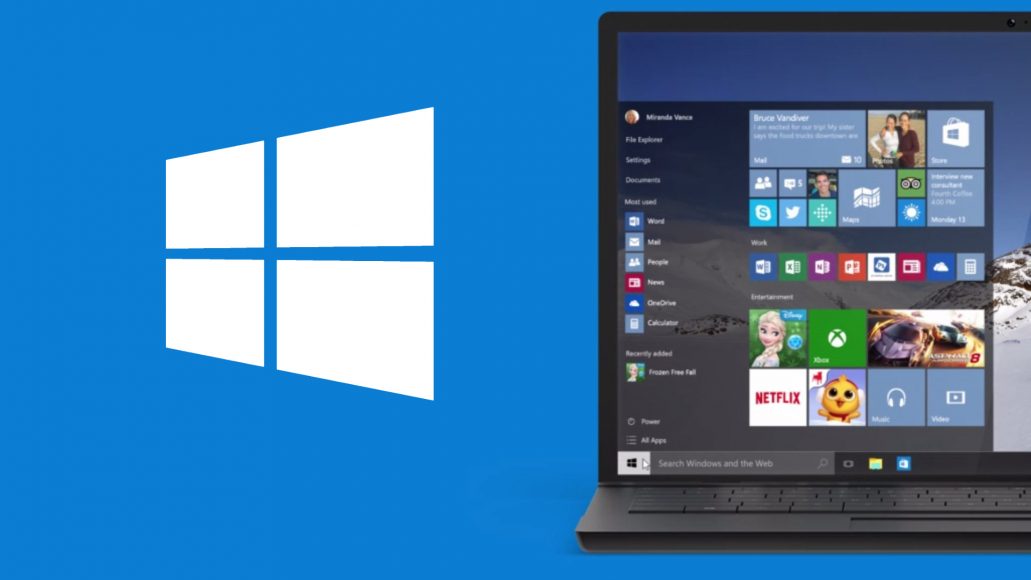Disponibile la nuova build di Windows 10 20H2 (19042.541) per gli utenti Insider | Beta Channel e Release Preview
Microsoft da pochi minuti ha provveduto a rilasciare una nuova build ufficiale per gli Insider di Windows 10 20H2, l’aggiornamento in arrivo ufficialmente per tutti gli utenti tra pochi mesi, relativa al ramo di sviluppo Beta Channel.

La build in fase di rilascio oggi viene identificata dal numero 19042.541 e porta una series di correzione e l’aggiunta di una notifica su Internet Explorer 11 che informa gli utenti della fine del supporto per Adobe Flash a dicembre 2020:
- We have fixed the issue where WSL fails to start with an “Element not found” error.
- We added a notification to Internet Explorer 11 that informs users about the end of support for Adobe Flash in December 2020. For more information, see KB4581051.
- We enhanced the system’s ability to detect when Microsoft Edge IE Mode stops responding.
- We fixed an issue that, in some instances, prevents the Language Bar from appearing when the user signs in to a new session. This occurs even though the Language Bar is configured properly.
- We fixed an issue that fails to recognize the first East Asian language character typed into a Microsoft Foundation Class Library (MFC) DataGrid.
- We fixed an issue the prevents you from reconnecting to a previously closed session because that session is in an unrecoverable state.
- We fixed an issue that causes games that use spatial audio to stop working.
- We fixed an issue that prevents the deletion of stale user profiles when you configure a profile cleanup Group Policy object (GPO).
- We fixed an issue in which selecting I forgot my Pin from Settings>Accounts>Sign-in options fails in a Windows Hello for Business On-Premise deployment.
- We updated 2021 time zone information for Fiji.
- We fixed an issue that affects the Microsoft’s System Centre Operations Manager’s (SCOM) ability to monitor a customer’s workload.
- We fixed an issue that causes random line breaks when you redirect PowerShell console error output.
- We fixed an issue with creating HTML reports using tracerpt.
- We allowed the DeviceHealthMonitoring Cloud Service Plan (CSP) to run on Windows 10 Business and Windows 10 Pro editions.
- We fixed an issue that prevents the content under HKLM\Software\Cryptography from being carried over during Windows feature updates.
- We fixed an issue that causes an access violation in lsass.exe when a process is started using the runas command in some circumstances.
- We fixed an issue in which Windows Defender Application Control enforces package family name rules that should be audit only.
- We fixed an issue that displays an error that states that a smart card PIN change was not successful even though the PIN change was successful.
- We fixed an issue that might create duplicate Foreign Security Principal objects for Authenticated and Interactive users in the domain partition. As a result, the configuration files (.cnf) for the original objects are damaged. This issue occurs when you promote a new domain controller using the CriticalReplicationOnly flag.
- We updated the configuration of Windows Hello Face recognition to work well with 940nm wavelength cameras.
- We reduced distortions and aberrations in Windows Mixed Reality head-mounted displays (HMD).
- We ensured that new Windows Mixed Reality HMDs meet minimum specification requirements and default to a 90Hz refresh rate.
- We fixed an issue that causes a stop error on a Hyper-V host when a virtual machine (VM) issues a specific Small Computer System Interface (SCSI) command.
- We fixed an issue that might cause attempts to bind a socket to a shared socket to fail.
- We fixed an issue that might prevent applications from opening or cause other errors when applications use Windows APIs to check for internet connectivity and the network icon incorrectly displays “No internet access” in the notification area. This issue occurs if you use a group policy or local network configuration to disable active probing for the Network Connectivity Status Indicator (NCSI). This also occurs if active probing fails to use a proxy and passive probes fail to detect internet connectivity.
- We fixed an issue that prevents Microsoft Intune from syncing on a device using the virtual private network version 2 (VPNv2) configuration service provider (CSP).
- We suspended uploads and downloads from peers when a VPN connection is detected.
- We fixed an issue that prevents Microsoft Internet Information Services (IIS) management tools, such as IIS Manager, from managing an ASP.NET application that has configured SameSite cookie settings in web.config.
- We fixed an issue with ntdsutil.exe that prevents you from moving Active Directory database files. The error is, “Move file failed with source and Destination with error 5 (Access is denied.)”
- We fixed an issue that incorrectly reports that Lightweight Directory Access Protocol (LDAP) sessions are unsecure in Event ID 2889. This occurs when the LDAP session is authenticated and sealed with a Simple Authentication and Security Layer (SASL) method.
- We fixed an issue that might cause Windows 10 devices that enable Credential Guard to fail authentication requests when they use the machine certificate.
- We restored the constructed attribute in Active Directory and Active Directory Lightweight Directory Services (AD LDS) for msDS-parentdistname.
- We fixed an issue that causes queries against large keys on Ntds.dit to fail with the error, “MAPI_E_NOT_ENOUGH_RESOURCES.” This issue might cause users to see limited meeting room availability because the Exchange Messaging Application Programming Interface (MAPI) cannot allocate additional memory for the meeting requests.
- We fixed an issue that intermittently generates Online Certificate Status Protocol (OSCP) Responder audit events (5125) to indicate that a request was submitted to the OCSP Responder Service. However, there is no reference to the serial number or the domain name (DN) of the issuer of the request.
- We fixed an issue that displays strange characters before the day, month, and year fields in the output from console commands.
- We fixed an issue that causes lsass.exe to stop working, which triggers a restart of the system. This issue occurs when invalid restart data is sent with a non-critical paged search control.
- We fixed an issue that fails to log events 4732 and 4733 for Domain-Local group membership changes in certain scenarios. This occurs when you use the “Permissive Modify” control; for example, the Active Directory (AD) PowerShell modules use this control.
- We fixed an issue with the Microsoft Cluster Shared Volumes File Systems (CSVFS) driver that prevents Win32 API access to SQL Server Filestream data. This occurs when the data is stored on a Cluster Shared Volume in a SQL Server failover cluster instance, which is on an Azure VM.
- We fixed an issue that causes a deadlock when Offline Files are enabled. As a result, CscEnpDereferenceEntryInternal holds parent and child locks.
- We fixed an issue that causes deduplication jobs to fail with stop error 0x50 when you call HsmpRecallFreeCachedExtents().
- We fixed an issue that causes applications stop working when they use Microsoft’s Remote Desktop sharing APIs. The breakpoint exception code is 0x80000003.
- We removed the HTTP call to www.microsoft.com that the Remote Desktop Client (mstsc.exe) makes at sign out when using a Remote Desktop Gateway.
- We fixed an issue with evaluating the compatibility status of the Windows ecosystem to help ensure application and device compatibility for all updates to Windows.
- We added support for certain new Windows Mixed Reality motion controllers.
- We fixed an issue that causes apps that use Dynamic Data Exchange (DDE) to stop responding when you attempt to close the app.
- We added an Azure Active Directory (AAD) Device Token that is sent to Windows Update (WU) as part of each WU scan. WU can use this token to query for membership in groups that have an AAD Device ID.
- We fixed an issue with setting the “Restrict delegation of credentials to remote servers” Group Policy with the “Restrict Credential Delegation” mode on the Remote Desktop Protocol (RDP) client. As a result, the Terminal Server service tries to use “Require Remote Credential Guard” mode first and will only use “Require Restricted Admin” if the server does not support “Require Remote Credential Guard”.








Commenta la notizia
Vuoi un'immagine profilo personalizzata? Impostala su Gravatar utilizzando la stessa e-mail associata ai commenti.